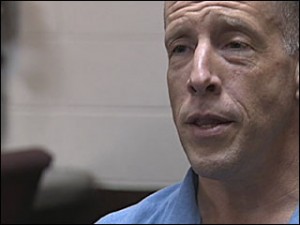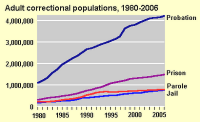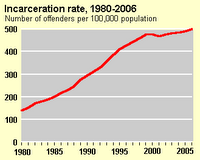in light of minnesota’s anticipated $7 billion state deficit, agency heads and administrators are scrambling to minimize cuts to their units. mark brunswick of the strib reports on how the state department of corrections used dramatic video evidence to resist cuts:
Dealing with a current $10 million budget cut, Minnesota Corrections Commissioner Joan Fabian has made an impassioned pitch about the perils of slicing any more funding … In the last six years it has had $85 million in operational cuts and reduced staff by over 300 positions. Double bunking to save money at prisons in St. Cloud and Stillwater have proved problematic. Cuts in recreation time for prisoners has led to violence, according to the department… To make her point, Fabian presented video footage taken from prison security cameras, showing a guard head-butted unprovoked, another guard sprayed with hot water and honey and then assaulted, and inmate fights in cell block areas where responding guards are armed with nothing more than a chemical irritant…
while i’m upset to see such dehumanizing conditions for both correctional officers and inmates, part of me wishes that the university could safeguard our interests by showing legislators our own dramatic footage of overstuffed classrooms and crumbling infrastructure. nevertheless, my university experience also makes me somewhat sympathetic to corrections administrators — across-the-board freezes and budget cuts hurt lean units (such as MN DOC and my home department of sociology) more than fat ones. if a department is already running near peak efficiency, even a minor cut carves muscle and bone from the operation.
while i’ve argued that the u.s. overincarcerates its citizens, my home state continues to maintain a relatively lean prison system. this makes it difficult to cut costs (e.g., via early release programs) without jeopardizing public safety. with the national imprisonment rate at 509 per 100,000, most states are incarcerating hundreds or thousands of prisoners who might be good candidates for early release or community supervision. minnesota is currently reserving incarceration for the .19% of the population that tends to persist in more serious or frequent criminal activity — this is less than half the rate in neighboring wisconsin and less than one-fourth the rate of high-incarceration southern states.
while i’m sympathetic to the difficulties of cutting minnesota corrections expenditures below current levels, i’d hate to see any department’s video sway the legislators — especially in light of the governor’s proposed 11% cut to higher education, health care, and other state units.





 the smoking gun
the smoking gun